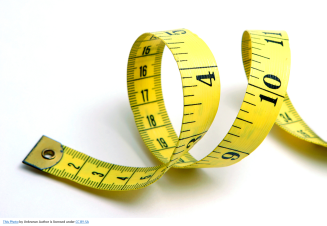I’m finishing up a year-long management fellowship this week. I’m sad to be ending this journey – I’ll miss my cohort and the monthly meetings that we have been engaging in since this past September. It’s been really nice to have time set aside each month to discuss philanthropy trends and to learn more about different career paths.
For our final session, our group leader asked to consider a number of questions about our career advancement. Things like identifying challenges and opportunities to our own career advancement; how have our aspirations changed since we started the fellowship; etc. One of his questions gave me pause: “What does career advancement mean to you?”. I am willing to bet that most people reading this would say “achieving a promotion” (myself included).
I used to think that a promotion was the only way to advance in a career. It is certainly used frequently as a measure for you to define success in your career and it’s the most commonly discussed avenue to advancement. But after my experiences this past year, where I’ve tried to “advance” my career in the traditional sense and have not been successful, I’m beginning to look at advancement differently. Maybe up isn’t the only option? Maybe societies narrow definition of career success doesn’t always apply?

For me, it was hard to sit down and admit that maybe an upward path isn’t always the best or right path. It was difficult to realize that my previous definition of advancement was too narrow and rigid. And it makes me sad to see that many companies still talk about and define advancement in that very narrow sense. It’s taken me almost a year and many hard conversations with myself to redefine and settle on what I think career advancement is:
- It is getting to experience and experiment with new ways of doing things.
- It is having the opportunity to stretch myself, regardless of the role I’m in.
- It is being strategic about my next position, clear about the skills I hope to gain there, and open about what skills I’d like to use more often.
- It is allowing myself to be open to all opportunities.
- It is holding myself accountable for my past successes and failures and using what I have learned to develop a framework for my path forward.
I think all of us would answer this question in a different way. In our society, we are so often told that if we are not moving up then we are not moving. That type of thinking can lead to a lot of frustration and disappointment in your career path, especially when opportunities to move up are not available in your current company or your local job market is very competitive. Maybe your path is just a little different!
If you were to go home today and think about this question, how would you define career advancement?
 Measurement has been on my mind lately. Maybe it’s because we’re entering the last quarter of our fiscal year at my place of employment and I’ve been looking for indicators to help guide my volunteers in the right direction. Or it could be because I’ve been poring over donor lists, trying to identify new prospects based on various measurements that I still don’t fully understand. Perhaps it’s because measurement is becoming more and more important in the non-profit sphere.
Measurement has been on my mind lately. Maybe it’s because we’re entering the last quarter of our fiscal year at my place of employment and I’ve been looking for indicators to help guide my volunteers in the right direction. Or it could be because I’ve been poring over donor lists, trying to identify new prospects based on various measurements that I still don’t fully understand. Perhaps it’s because measurement is becoming more and more important in the non-profit sphere. But I guess I’ve always felt this way about my current department. I shifted positions about three and half years ago and while I was prepared for my new role, I was not prepared for the change in team structure. My old department functioned like a “team”. I had a manager who was really focused on bringing the group together to engage in work together. She asked probing, thoughtful questions to help move the discussion along and we rotated who led meetings. We collaborated on everything and we spent a lot of time discussing best practices and specific procedures. It could be frustratingly slow to reach a decision but at the end of the day, I always felt included in the work product even if I didn’t feel empowered to make a decision on my own.
But I guess I’ve always felt this way about my current department. I shifted positions about three and half years ago and while I was prepared for my new role, I was not prepared for the change in team structure. My old department functioned like a “team”. I had a manager who was really focused on bringing the group together to engage in work together. She asked probing, thoughtful questions to help move the discussion along and we rotated who led meetings. We collaborated on everything and we spent a lot of time discussing best practices and specific procedures. It could be frustratingly slow to reach a decision but at the end of the day, I always felt included in the work product even if I didn’t feel empowered to make a decision on my own.